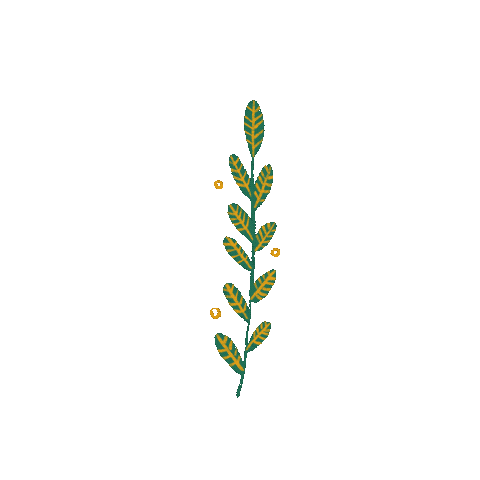
Colours of Congo
Patterns, Symbols and Narratives
in 20th-Century Congolese Paintings
Foreword
Florian Knothe and Estela Ibáñez-García
Colours of Congo displays a selection of Congolese work created from the 1920s to 1960. Developed in collaboration with private collectors based in Brussels and Hong Kong, and the Royal African Art Museum in Tervuren, generous financial support was provided by the HKU Museum Society and Hong Kong University’s Endowment Funds for Music and Fine Arts, while the African Studies programme at The University of Hong Kong provided academic support.

Henri Charles Kazadi and Jean-Bosco Kamba painting frescoes in the Elisabethville Theater. (Moonens Archives; Photo: Laurent Moonens)
The exhibition’s narrative presents a generous overview of paintings that were instigated when a single artist from Belgium began a painting workshop so as to collaborate with the indigenous population of Elisabethville (modern-day Lubumbashi). This first studio was followed by other workshops that assisted in developing a hybrid artform that remains a celebrated phenomenon.

The exhibition and accompanying volume of essays primarily examines this group of paintings as artworks worth considering on their own merits—describing their techniques and inherent beauty, while acknowledging that their iconographic contents reflect daily life within the village communities. The juxtaposition of European artists and artistic materials brought to Africa, and the display of African paintings in European art metropolises, initiated decades of intense collaboration and cultural exchange.

The Kingdom of Kongo flourished long before the first Portuguese arrived in the late 15th century. Subsequent European explorers and Christian missionaries exposed the Congo River Basin to myriad traditions and subsequent decades of colonial rule, which ultimately ended with the Congo’s independence. Throughout these shifting regimes, the material wealth of Congolese society allowed for the production of an artistic practice that has been preserved and documented internationally, and which dominates the anthropological collections of major museums throughout the West. Whereas Congolese sculpture depicted ancestors or spirits that served as cult objects in ceremonial—often religious—practices, paintings and woven textiles fulfilled primarily decorative purposes.
Untitled (Parade)
Floribert Mwembia
Gouache on paper, 41.5 x 35.5 cm
Signed ‘Mwembia Fl.’, ca. 1955–58
Pierre Loos Collection
Photo: Michael De Plaen
The multifaceted concepts of identity and belonging are crucial to this interdisciplinary project, and our hope is to elucidate these regional encounters of early globalisation while emphasising the prominence of an artform deserving of greater study.

With this ambitious goal in mind, Colours of Congo presents a pioneering exhibition and book project focusing on a body of work that has yet to receive significant scholarly attention, but which deserves consideration within the re-emerging debate on European Colonialism. These works are the result of a particular facet of colonialism, one based on a paternalistic attitude towards the Congolese and their culture, rather than the more commonly documented exploitative colonial stance.
Georges Thiry, Pierre Romain-Desfossés, Laurent Moonens and Pierre Lods each fostered artistic creations by native Congolese artists based on a mutual appreciation for the aesthetic dimensions of Congolese mural paintings. Their primary concerns were to preserve Congolese indigenous art and to foster the innate genius they saw in these artists.



Thomas Bayet, through unparalleled access to the Ivan Dierickx and Pierre Loos Archives, has prepared the volume’s extensive historic overviews on the various workshops and their founders. His profound knowledge of Congolese art, and extensive background on the painters, forms the backbone of an account that values the artworks’ historical development and critical discussion. The European protectionist attitude of Thiry, Desfossés, Moonens and Lods is more complex than first appears. Despite their ‘good intentions’ and emphasis on ‘preserving the indigenous traditions’, and ‘promoting the innate artistic creativity’ of the Congolese, the academic framework, techniques and media that Europeans imposed unavoidably affected the Congolese creations that they hoped to foster. Tensions between the Europeans’ mission and Congolese realities are encoded into the pictorial representations. These tensions remain largely invisible to European audiences, as to see them one must be aware of their original contexts and critical of their Eurocentric frames of reference. From this perspective, the ability to see through the paintings creates privileged entry points into the realities that they are meant to represent.
Untitled (Lakebed)
Jean-Bosco Kamba
Gouache and oil on paper 24 x 17.5 cm
Signed ‘Kamba J. Bosco’, 23.4.1960
Pierre Loos Collection
Photo: Michael De Plaen
Colours of Congo is a collaboration that highlights the multiplicity of perspectives, bringing into dialogue European, Asian and African voices. Recent events have increased the already pressing need of being particularly mindful about history and institutional mechanisms of exclusion.

Untitled (Crocodiles)
Ilunga
Oil on board 65 x 76 cm
Signed ‘Ilunga F’ ca. 1960
Pierre Loos Collection
Photo: Michael De Plaen
The contribution of this collaborative curatorial project lies in the depth of its research and educational nature. The exhibition displays a selection of Congolese paintings and provides diverse perspectives to assist audiences in understanding the complexity of Congolese realities during colonial times. These perspectives reveal that reality is a construct based on how individuals make sense of their own subjective experiences. And as the essays in this catalogue illustrate, this narrow sphere of subjectivity can be transcended through a critical reading of the arts.

Organized by 主辦
Supported by 支持
地址:香港薄扶林般咸道90號 地圖顯示位置
© 版權屬香港大學美術博物館 2021
Address: 90 Bonham Road, Pokfulam, Hong Kong View the location on Google Maps
Tel: (852) 2241 5500 Fax: (852) 2546 9659 Email: museum@hku.hk
© 2021 by University Museum and Art Gallery, HKU. All Rights Reserved







